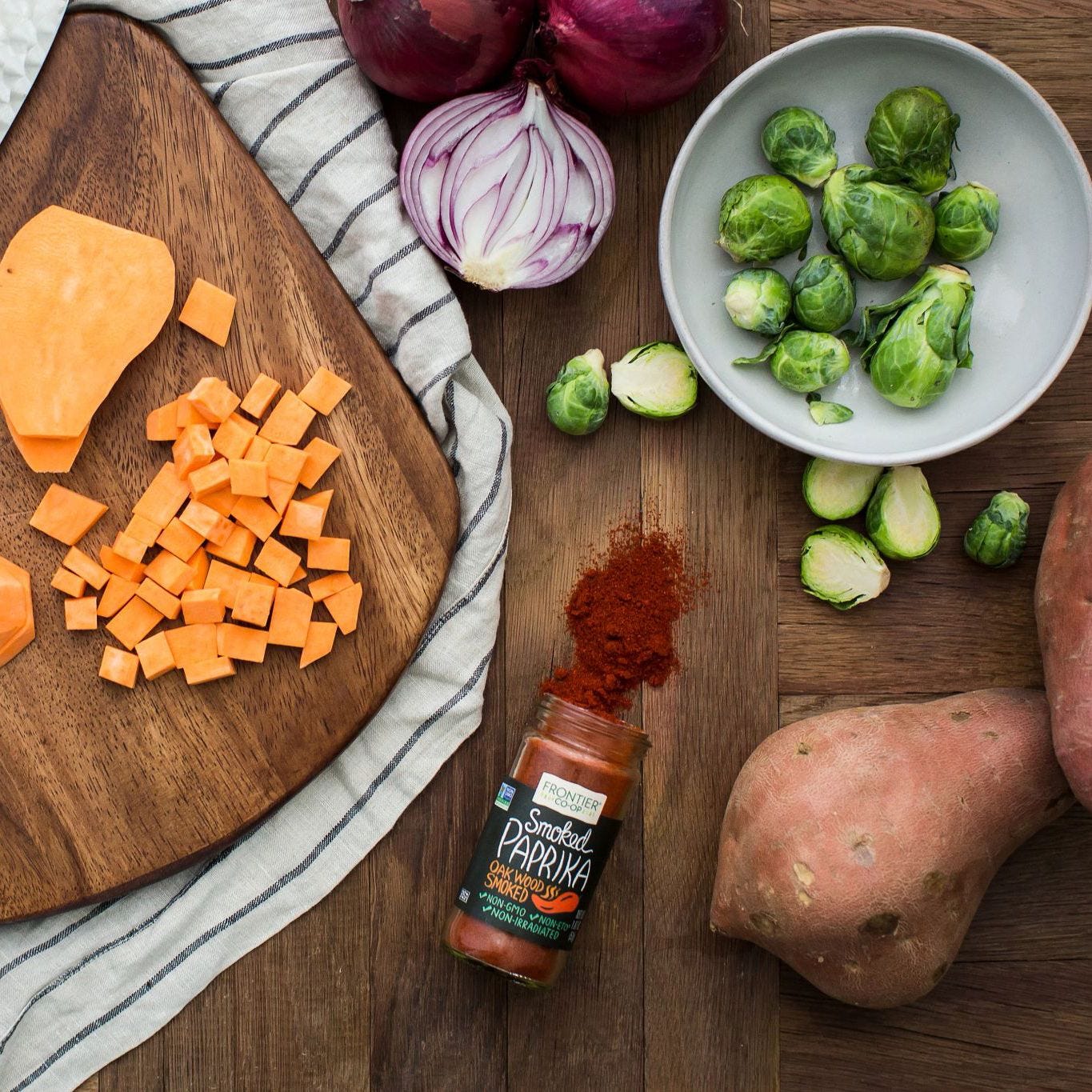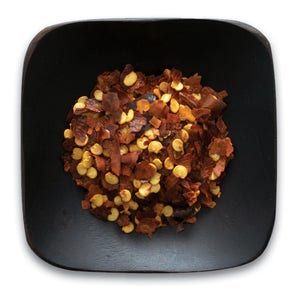Our Guide to the Best Paprika Substitute
Paprika is a vibrant spice beloved by chefs and home cooks alike and holds a special place in kitchens around the world. Derived from dried and ground peppers, paprika offers a spectrum of flavors, ranging from sweet and mild to smoky and hot. Its rich red hue and distinct taste add depth and character to countless dishes, making it an indispensable ingredient in diverse cuisines.
Originating from Central and South America, paprika found its way to Europe in the 16th century, where it became a staple in Hungarian and Spanish cuisines. Today, paprika is celebrated for its versatility and ability to elevate a wide array of culinary creations. Whether it's sprinkled over deviled eggs for a pop of color, stirred into goulash for deeper flavor, or used to season meats before grilling, paprika infuses dishes with its unique essence, adding warmth and complexity.
But what happens when you reach for this staple ingredient and realize you’ve run out or need a substitute? Let's explore some of the best alternatives to paprika that can elevate your culinary creations.
5 Paprika Substitutes
Discovering suitable substitutes for paprika opens a world of possibilities for enhancing your dishes. Here are five alternatives to paprika that can complement your recipes:
- Ancho Chili Powder: Made from dried poblano peppers, ancho chili powder offers a mild heat and a subtly sweet, smoky flavor. It serves as an excellent substitute for paprika in recipes where you desire a gentle heat and depth of flavor, such as sauces, rubs, and Mexican-inspired dishes.
- Crushed Red Pepper Flakes: Widely used as a paprika substitute, crushed red pepper flakes impart moderate heat and a hint of fruity flavor to dishes. Sprinkle them over pizza, pasta, or roasted vegetables for a fiery kick that enhances the overall taste experience.
- Cumin and Cayenne Pepper Blend: Create your homemade paprika substitute by blending ground cumin with cayenne pepper. This versatile blend offers customizable heat levels and adds a flavorful punch to spice rubs, chili, and roasted meats.
- Gochugaru: Korean red pepper flakes, known for their vibrant color and moderate spiciness, can replace paprika in various dishes. With a fruity taste reminiscent of Mediterranean spices, gochugaru is ideal for Korean cuisine staples like kimchi, bulgogi, and spicy stir-fries.
- Chipotle Pepper: With its fiery heat and pungent aroma, chipotle pepper adds a bold kick to dishes. It's perfect for spicing up sauces, marinades, and rubs, where its intense flavor shines through.
Tips for Successful Substitutions
Successfully substituting paprika in your recipes requires thoughtful consideration and trialing. Here are some practical tips to ensure a seamless transition and maintain the intended flavors and heat levels:
Test and Taste
- Start Small: Add a small amount of the substitute to your recipe and adjust the quantity based on your taste preferences.
- Taste as You Go: Regularly taste your dish as you incorporate the substitute to gauge its impact on the overall flavor profile and make necessary adjustments.
Keep Flavor Profiles in Mind
When exploring paprika substitutes, it's essential to consider their flavor profiles to ensure they complement your dishes seamlessly. Here are some factors to keep in mind:
- Sweetness: If you're substituting sweet paprika, consider how the sweetness of the substitute will interact with other flavors in your dish. Opt for substitutes with a similar level of sweetness to maintain balance and harmony.
- Smokiness: Some paprika substitutes, such as smoked paprika or cayenne pepper, offer a distinct smoky flavor. Consider how the smokiness of the substitute will complement the other ingredients in your dish. If using a substitute with smoky notes, be mindful of its intensity to prevent overwhelming the dish with smokiness.
- Aroma: The aroma of paprika substitutes can vary widely, from earthy and aromatic to pungent and spicy. Take into account how the aroma of the substitute will contribute to the overall sensory experience of your dish. Experiment with different substitutes to find one that enhances the aroma of your recipe.
Consider Heat Levels
It’s crucial to consider the heat level to ensure it aligns with your preferences and the requirements of your recipe. Here's how to navigate heat levels effectively:
- Understanding Scoville Heat Units (SHU): Familiarize yourself with the Scoville Heat Units (SHU) scale, which measures the spiciness or heat intensity of peppers and paprika substitutes. The higher the SHU value, the hotter the substitute.
- Matching Heat Intensity: Assess the heat intensity of your paprika substitute and compare it to the original paprika. If your recipe calls for sweet paprika, opt for a substitute with a mild heat level to maintain the intended flavor profile. Similarly, if your recipe requires hot paprika, choose a substitute with a higher heat level to ensure the dish retains its spiciness.
- Adjusting Quantity: Be mindful of the quantity of paprika substitute you use in your recipe, especially if it has a different heat level than the original paprika. Start with a smaller amount and gradually increase it to taste, adjusting to achieve the desired level of spiciness without overwhelming the dish.
By following our tips and guidelines, you can confidently explore paprika substitutes and unlock a world of new flavors and culinary possibilities in your kitchen. Embrace the opportunity to experiment, adapt, and innovate as you discover the perfect substitutes to suit your taste preferences and cooking style.























